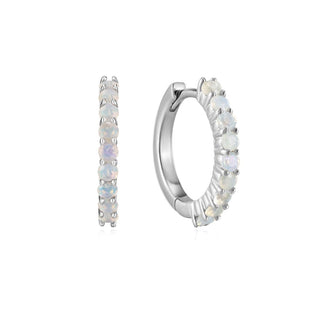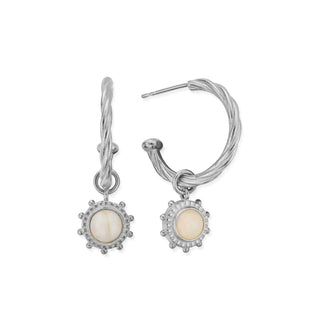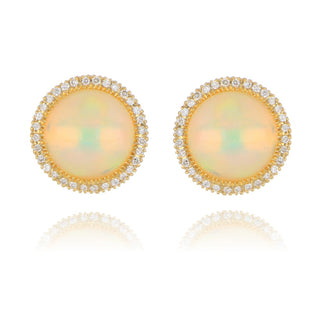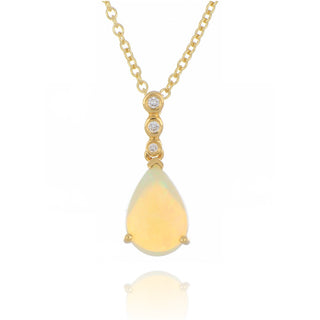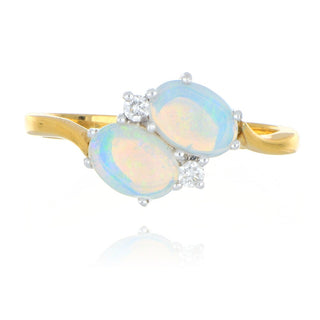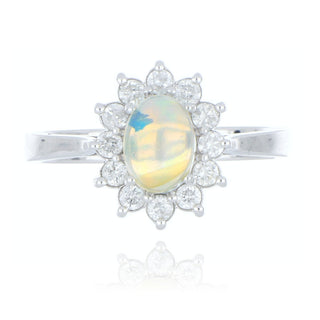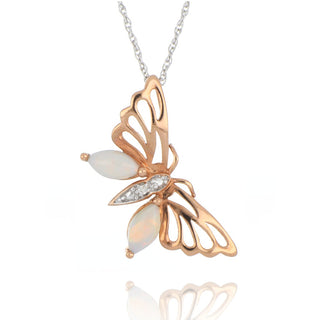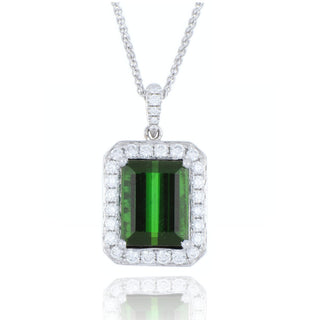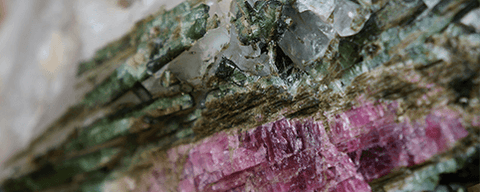
Opal and tourmaline are the birthstones for the month of October. Opal is also the stone given to celebrate a 14th wedding anniversary.
The opal is a beautiful shimmering stone, sometimes milky coloured, emitting a stunning array of colours from its surface. The opal derives its name from the Sanskrit upala, meaning “precious stone”, and the Greek derivative “Opallios” meaning to see a change in colour. The Romans thought that the opal was the most precious and powerful gem of all, because it is made up of the colours of many other gems. This rich play in colour can give opals a somewhat splendorous, mystical quality, unsurpassed by any other gem.
The perhaps lesser known tourmaline, the Earth’s most colourful mineral, is dazzlingly beautiful. The wide range of colour compositions and colour zoning within the crystals causes tourmaline to occur in more colour combinations than any other mineral. It is a popular gemstone due to the vast array of bright and stunning colours available. Each colour having its own special meaning.
Characteristics
Depending on the conditions in which it formed, opal may be transparent, translucent, or opaque, with a base colour of white, yellow, orange, red, purple, pink, blue, green, grey, black and brown. Opals can appear to change colour when viewed from different angles, or in different types of light. This colour changing phenomenon is known as a play of colour. It is what gives a gemstone magnificent flashes of colour, or schillers of different colours, which vary from stone to stone. The rarest opals are black in colour, with white, grey and green amongst the most common.
The opal is not a true mineral. Opal is hydrated amorphous form of silica, with a water content anywhere from 3-21% by weight. Because of this amorphous characteristic, it is considered a mineraloid, unlike crystalline forms of silica, which are classed as minerals. Opals rate 5.5-6 on the Mohs scale of hardness, so are more delicate than some of the harder gems like sapphire and diamond.
Tourmaline is a large group of minerals, 32 according to the International Mineralogical Association, each defined by its different chemical composition. It is a crystalline boron silicate mineral compounded with elements such as aluminium, iron, magnesium, sodium, lithium or potassium. It is a hard and durable semi-precious stone formed from hydrothermal activity, with a Mohs rating of 7-7.5. The most common colour of tourmaline is black, but it can be found in all of the colours of the spectrum, with wonderful clarity and very rich colour. Paraiba, a highly sought-after tourmaline, is a spectacular bright blue to bright green stone, coloured by trace amounts of copper. Vivid violet specimens have also been found, with traces of both copper and manganese. Its colour is determined by the type of trace elements present. Most colours are fairly common, but pure blues and red stones are rare, and gems that change colour are very rare.
Jewellery
The stunning play of colour found in a quality opal will look beautiful set into any piece of opal jewellery. Opal rings, necklaces, earrings and brooches make unique, precious gifts, and are sure to delight anyone with an October birthday, or celebrating a 14th wedding anniversary.
Tourmaline jewellery is equally as breath-taking, the rich, bright and vibrant colours of these gemstones create stunning pieces in a beautiful range of settings and styles.
History
The earliest known opal artefacts date back to around 4000 BC, and most likely originated in Ethiopia. The Romans are credited with creating the first real market for opals. Mark Anthony was believed to have loved opals and sought after these precious gems to adorn his love Cleopatra. Monarchs the world over have been presented with exquisite opals as gifts. Queen Victoria owned a beautiful opal ring, given to her by her Aunt, the Princess Mary, in 1849. The ring, previously owned by Princess Charlotte, dated back to around 1810. The Royal Court of Britain was once regarded as the model for fashion around the world, so it’s not surprising that opals became increasingly desirable during the Victorian era, when Queen Victoria and her daughters were seen wearing them.
The world’s largest and most valuable opal is believed to be “Olympic Australis”, a massive stone discovered in 1956 in an opal field in the town of Coober Pedy in South Australia. A 17,000-carat stone, it weighed in at an astonishing 7.5 pounds/3.4 kilograms. Coober Pedy continues to be a valuable source for opals, and some of the best examples of the rare black opal have been found here.
The largest polished black opal, the “Black Peacock”, weighs 160 carats. It was found in the Royal Peacock opal mine in the Virgin Valley, Humboldt County in Nevada, USA. It is kept in the Smithsonian Institute, which houses some of the world’s largest black opals.
Since the 1800’s Australia has dominated the world’s opal production, with more than 90% of the world’s precious opals coming from Australia. Other parts of the world known for producing opals are Mexico, Brazil, Indonesia, Czech Republic, Ethiopia and the USA.
Tourmaline is mined primarily in Brazil and Africa. These colourful plentiful gemstones have been appreciated for centuries. Often mistaken for similar looking stones, such as emeralds, rubies and sapphires, it was first recognised as the group of minerals “Tourmaline” in the 1800’s, when the chemical composition of the stones was examined more closely. Tourmaline is readily available, which keeps it affordable and popular.
Meaning
Opals are believed to signify protection, purity and hope, they bring the wearer protection from harm and emit positivity energies. Arabian folklore tells of the opal falling from heaven in flashes of lightening, while the early Greeks believed that opals bestowed the gifts of prophecy and foresight on its wearer.
Tourmaline is believed to clear negative energy, transforming it into positive energy that can heal and strengthen the body. Each colour of tourmaline has a different name and a different meaning. Red tourmaline or “rubellite” represents love, vitality and passion. Blue tourmaline “indicolite” is said to bring peace and tranquillity. Pink tourmaline also represents love, but with a gentle femininity. Green tourmaline “vanadium” represents growth and provides healing, thriving energy. Black tourmaline “schorl” is believed to provide protection from harmful or negative energies. It is a masculine stone believed to neutralise negative thoughts and internal conflict.
At Allum & Sidaway we have a beautiful selection of opal birthstone jewellery . Visit one of our stores or purchase from our range online.
